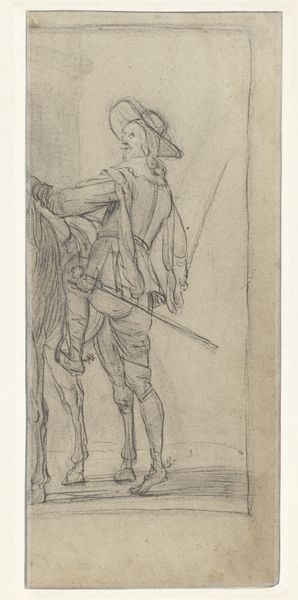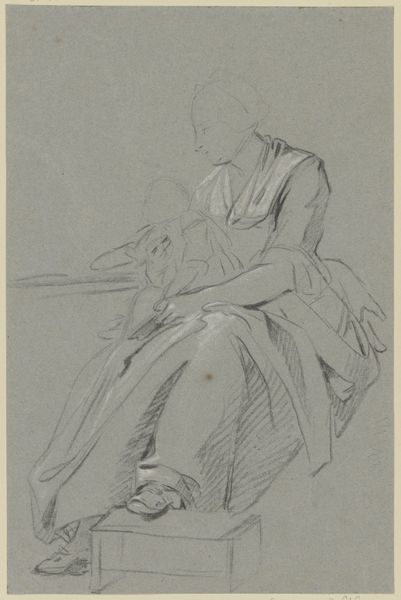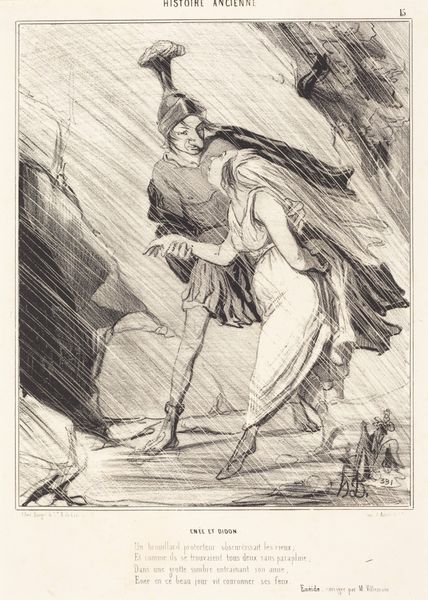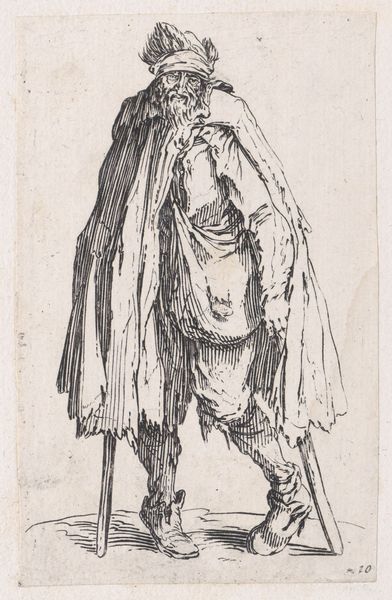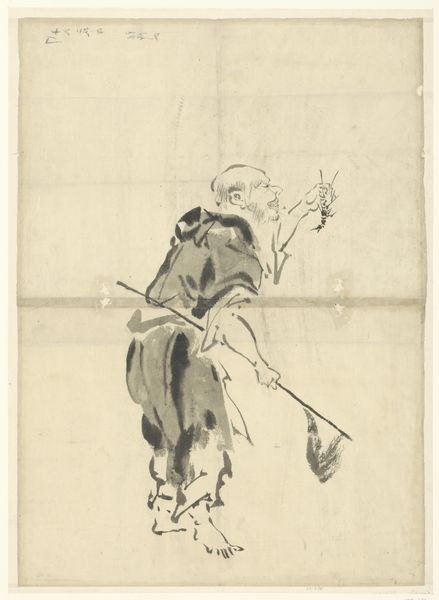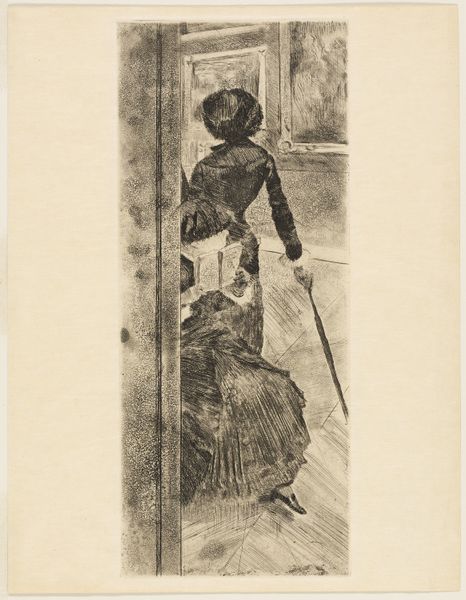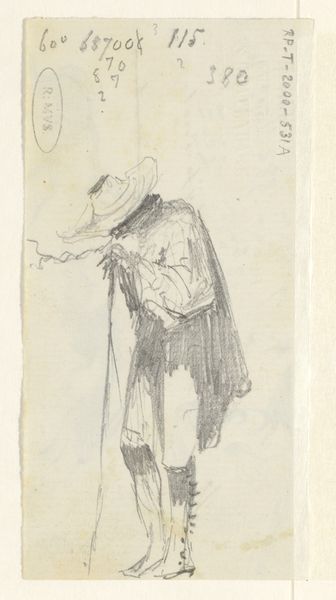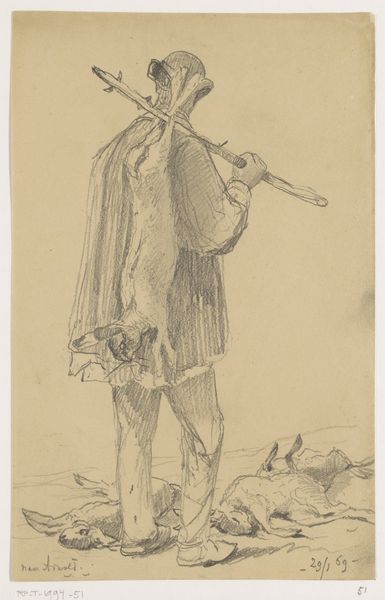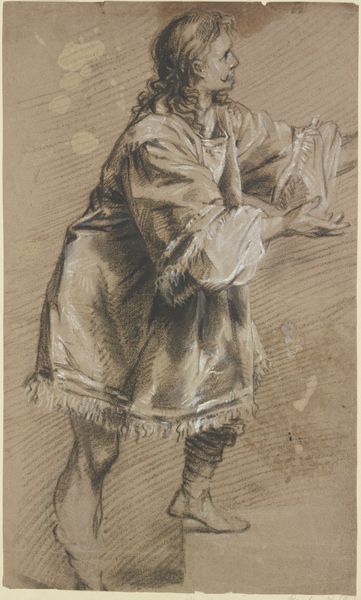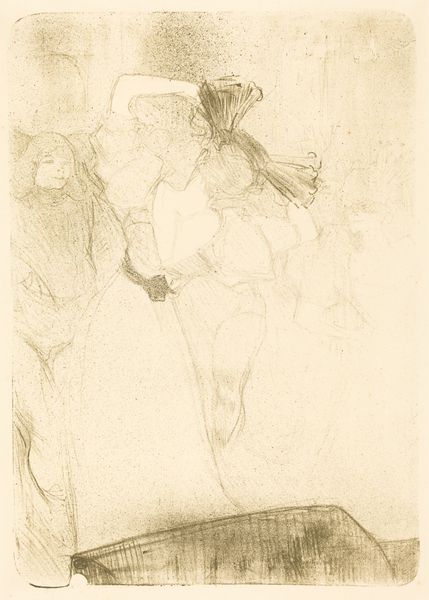
drawing, pencil
#
portrait
#
drawing
#
light pencil work
#
pencil sketch
#
pencil
#
sketchbook drawing
#
genre-painting
#
realism
Dimensions: height 354 mm, width 251 mm
Copyright: Rijks Museum: Open Domain
Editor: This is Pieter de Josselin de Jong’s "Arbeider in staalfabriek," or "Worker in Steel Factory," a pencil drawing likely created between 1871 and 1906. It's currently held at the Rijksmuseum. I'm immediately struck by the hunched posture of the worker, there is a beautiful vulnerability in this very raw depiction. What draws your eye, and how do you interpret this piece? Curator: It feels like a memory being coaxed from the paper, doesn't it? I see a poignant reflection on the industrial era – the fatigue etched into the worker’s stance, almost bowed under the weight of labor and heat. Look at how De Josselin de Jong uses light and shadow: the dark, almost aggressively shaded boots anchor him, while the wisps of pencil suggest the ethereal danger of his working conditions. It makes you wonder, doesn’t it, about the untold stories of these unsung heroes of industry? Editor: It absolutely does. And it's interesting you point out the contrast in the shading, because his face is completely obscured. I suppose the artist wanted us to think about the universality of the experience rather than focusing on an individual. Curator: Precisely. He is all workers, and no worker. It's as if the man has almost become another tool of the factory. I love the incomplete sketches dotted on the page as well. There is a life, an intimacy to these incomplete portraits and stray shapes. Are we watching the artist work? I wonder if De Josselin de Jong aimed to immortalize the quiet dignity amidst the grime? Editor: That's a beautiful sentiment. I initially saw the piece as depicting hardship, but seeing it as dignifying labor changes my perspective. Curator: And maybe that’s the enduring magic of art, isn’t it? The ability to continuously shapeshift our understanding. Editor: Definitely. Thank you. It gives me much to consider and explore as I examine other works!
Comments
No comments
Be the first to comment and join the conversation on the ultimate creative platform.
